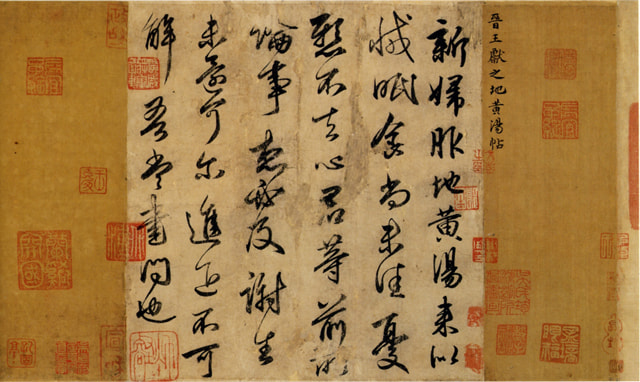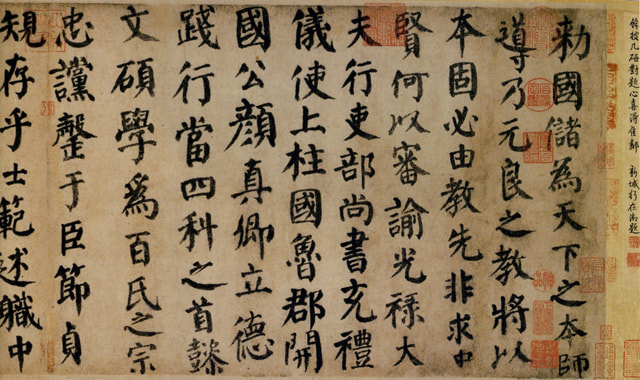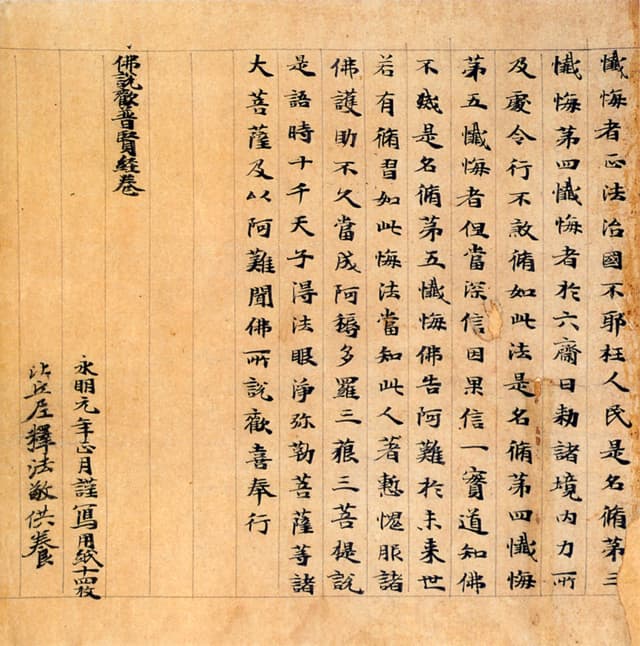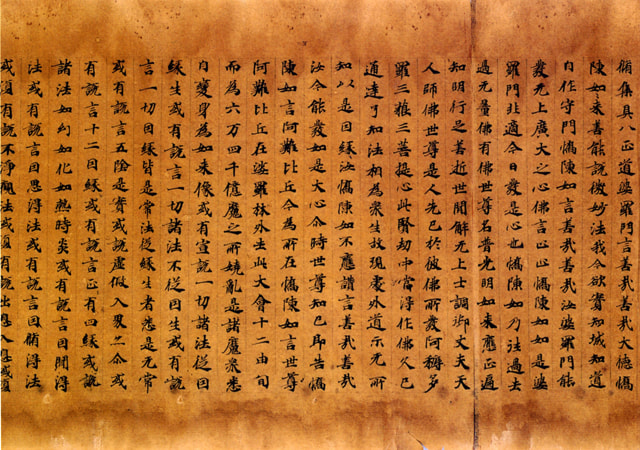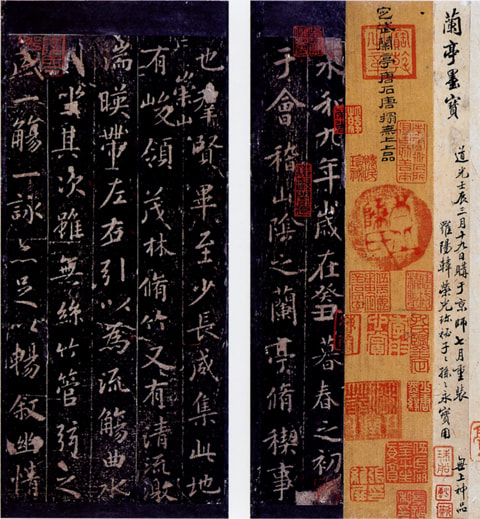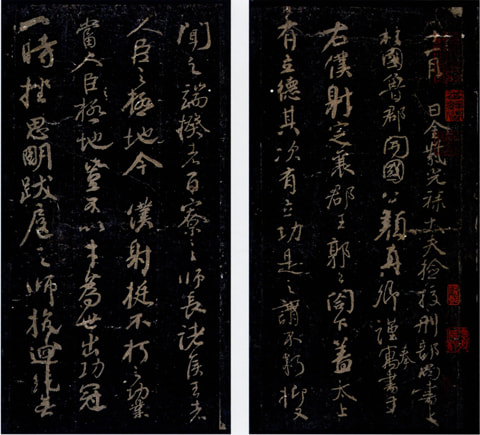Q : Could you talk about the range of the collections?
Nabeshima: The collections cover a variety of fields. After all, Fusetsu did not intend to collect calligraphy, but aimed to collect textual materials, that is to say, materials with Chinese characters written on them, as many as possible. Although there are some items with kana written on them, 90% of the collections are related to Chinese characters. Although people imagine a museum where calligraphy works are exhibited when it comes to a calligraphy museum, Fusetsu interpreted calligraphy more widely. He thought that calligraphy consists of characters, that is to say, Chinese characters, and envisaged a museum where visitors can deepen their understandings about the history of Chinese characters, so he collected everything, whether it was three-dimensional or two-dimensional, if Chinese characters were written on it. For example, a Buddhist statue is exhibited in the main building. Chinese characters describing the origin of it are written on the back or bases of it. It seems Fusetsu was more interested in characters than in Buddhist statues. The museum has historical materials of Chinese characters, ranging from inscriptions on bones and tortoise carapaces, which are the beginning of Chinese characters, to stone monuments with characters written on them and bronze ware. The museum displays a variety of items from different fields.(continued in the right column)
Q : What is the most important item?
Although Chinese historical calligraphy is important, the most precious items are calligraphy books written by Yan Zhenqing and Wang Xianzhi. Yan Zhenqing's piece of standard calligraphy in this museum is said to have been the only existing handwritten work by him. Fusetsu collected many rubbed copies of historical calligraphy, including rubbed copies made by Wang Xizhi.
Q : Are there some items which are designated as important cultural properties or are highly valued?
As for important cultural properties, the museum has 12 copied sutras, which are called "Dunhuang Documents," that is to say, documents excavated in Dunhuang or Turpan. These items were designated as cultural properties by the country in 1933 and 1940. At that time, they were designated as national treasures. However, when the Cultural Properties Protection Law was enacted, all the former national treasures were re-designated as important cultural properties. Five items were designated as important art objects. As for these items, the application for important cultural properties was not made by Fusetsu. He thought all the items had equal values, and did not like to make a distinction among them. The reason why they were designated was that, if similar items stored in other facilities were designated, it was not fair not to designate same level items, so the designation was made by the country. The designation was mainly placed on Dunhuang Documents because some Dunhuang related items, owned by other facilities, were also designated at that time.
Q : Who are the majority of visitors?
As you may expect, the majority of visitors are researchers of calligraphy and people leaning calligraphy. People from China and Korea have also visited the museum. Westerners have also come to the museum in order to look at the items related to Dunhuang Documents. The Pelliot collection (owned by the Bibliothèque Nationale de France) and the Stein collection (owned by the British Museum) also include Dunhuang Documents, so they might visit this museum.
Q : Do you continue exchanging with the staff of the Pelliot collection and others? The Pelliot collection also includes important items, doesn't it?
Actually, Dr. Paul Pelliot visited this museum in 1935 before the museum opened. Currently, I also go to Paris and study the Pelliot collection whenever there is a chance. When curators of the Pelliot collection come to Japan, we study Dunhuang Documents together. Pelliot's visit to this museum was an honor for the Nakamura family, who commented that it was a great pleasure to start the exchange again.









